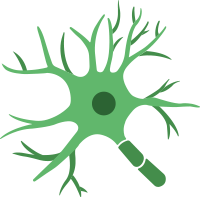
Neural Cell News
Neural Cell News is an online resource covering the latest research in neuroscience, neural stem cells, and neurological conditions.
BOK-Engaged Mitophagy Alleviates Neuropathology in Alzheimer’s Disease
[Brain] Researchers discovered that a neuron-specific loss of Bcl-2 family member BOK in Alzheimer’s disease patients and APPswe/PS1dE9 mice was closely associated with mitochondrial damage and mitophagy defects.
Membrane Remodeling by FAM92A1 during Brain Development Regulates Neuronal Morphology, Synaptic Function, and Cognition
[Nature Communications] Researchers reported that FAM92A1 was expressed in neurons starting from embryonic development. FAM92A1 knockout in mice resulted in altered brain morphology and age-associated cognitive deficits, potentially due to neuronal degeneration and disrupted synaptic plasticity.
Tomivosertib Reduces Ectopic Activity in Dorsal Root Ganglion Neurons from Patients with Radiculopathy
[Brain] Using cultured dorsal root ganglion neurons recovered during thoracic vertebrectomy surgeries, investigators showed that inhibition of mitogen-activated protein kinase interacting kinase (MNK) with tomivosertib reversibly suppressed spontaneous activity in human sensory neurons that were likely nociceptors based on size and action potential characteristics associated with painful dermatomes within minutes of treatment.
Microglia Rescue Neurons from Aggregate-Induced Neuronal Dysfunction and Death through Tunneling Nanotubes
[Neuron] Researchers discovered that microglia established connections with neurons using tunneling nanotubes (TNTs) in both physiological and pathological conditions. These TNTs facilitate the rapid exchange of organelles, vesicles, and proteins
Single-Cell Discovery of m6A RNA Modifications in the Hippocampus
[Genome Research] Scientists investigated m6A in the hippocampus at a single-cell resolution, revealing a comprehensive landscape of m6A modifications within individual cells.
Single-Cell Multiregion Dissection of Alzheimer’s Disease
[Nature] The authors reported a single-cell transcriptomic atlas of six different brain regions in the aged human brain, covering 1.3 million cells from 283 post-mortem human brain samples across 48 individuals with and without Alzheimer’s disease.
Human Microglial Cells as a Therapeutic Target in a Neurodevelopmental Disease Model
[Stem Cell Reports] Disruption of the methyl-CpG binding protein 2 (MECP2) in microglia-like cells (MGLs) led to transcriptional and functional perturbations, including impaired phagocytosis. The co-culture of healthy MGLs with MECP2-knockout neurons rescued synaptogenesis defects, suggesting a microglial role in synapse formation.
NeOnc Initiates Cohort 3 in Phase I Clinical Trial of NEO212™, a Patented Novel Hybrid Drug Designed to Deliver ‘Double Punch’ against Malignant Brain...
[NeOnc Technologies, Inc. (GlobeNewsWire)] NeOnc Technologies Holdings, Inc. has begun enrollment of patients for Cohort 3 out of 6 of the Phase I clinical trial of NEO212™, the company’s patented novel hybrid drug designed to deliver a ‘double punch’ against primary and secondary malignant brain tumors.
Lario Therapeutics Awarded $6M Grant from the Michael J. Fox Foundation for Parkinson’s Research
[Lario Therapeutics Limited] Lario Therapeutics announced it has been awarded a $6 million USD grant from The Michael J. Fox Foundation for Parkinson’s Research. The programme is in collaboration with the Oxford Parkinson’s Disease Centre, which will also be delivering key science as part of the grant.
Dynamic Regulation of Alternative Polyadenylation by PQBP1 during Neurogenesis
[Cell Reports] Researchers uncovered polyglutamine-binding protein 1 (PQBP1) as an emerging alternative polyadenylation (APA) regulator that actively maintained cell-specific APA profiles in neural progenitor cells (NPCs) and delicately managed the equilibrium between NPC proliferation and differentiation.
HADHA Promotes Glioma Progression by Accelerating MDM2-Mediated p53 Ubiquitination
[Cancer Gene Therapy] Investigators utilized co-immunoprecipitation and protein stability assays to investigate the potential mechanisms involving hydroxyacyl-CoA dehydrogenase trifunctional multienzyme complex subunit alpha (HADHA), MDM2, and p53 in glioma.
The Prion-Like Effect and Prion-Like Protein Targeting Strategy in Amyotrophic Lateral Sclerosis
[Heliyon] Investigators summarize studies on the prion-like effect of pathological proteins in ALS and list six prion-like protein targeting strategies that they believe have potential for ALS therapy, including antisense oligonucleotides, antibody-based technology, peptide, protein chaperone, autophagy enhancement, and heteromultivalent compounds.
Neural Cell News helps scientists keep pace with the latest research, reviews, and industry developments in neuroscience. Specific research topics include neural development and neuroregeneration, neural signaling related to cellular responses and behavior, and synaptic plasticity. Research into the diagnosis, progression, cellular characteristics, and treatment of brain diseases such as Parkinson’s, Multiple Sclerosis, Alzheimer’s, Amyotrophic Lateral Sclerosis and various brain cancers, as well as brain damage resulting from infection, trauma, stroke, seizures, and tumors, is also covered.

 Cancer Stem Cell News
Cancer Stem Cell News Cell Therapy News
Cell Therapy News Dermal Cell News
Dermal Cell News Endothelial Cell News
Endothelial Cell News ESC & iPSC News
ESC & iPSC News Extracellular Matrix News
Extracellular Matrix News Hematopoiesis News
Hematopoiesis News Hepatic Cell News
Hepatic Cell News Human Immunology News
Human Immunology News Immune Regulation News
Immune Regulation News
 Intestinal Cell News
Intestinal Cell News Mammary Cell News
Mammary Cell News Mesenchymal Cell News
Mesenchymal Cell News Muscle Cell News
Muscle Cell News Neural Cell News
Neural Cell News Organoid News
Organoid News Pancreatic Cell News
Pancreatic Cell News Prostate Cell News
Prostate Cell News Pulmonary Cell News
Pulmonary Cell News
